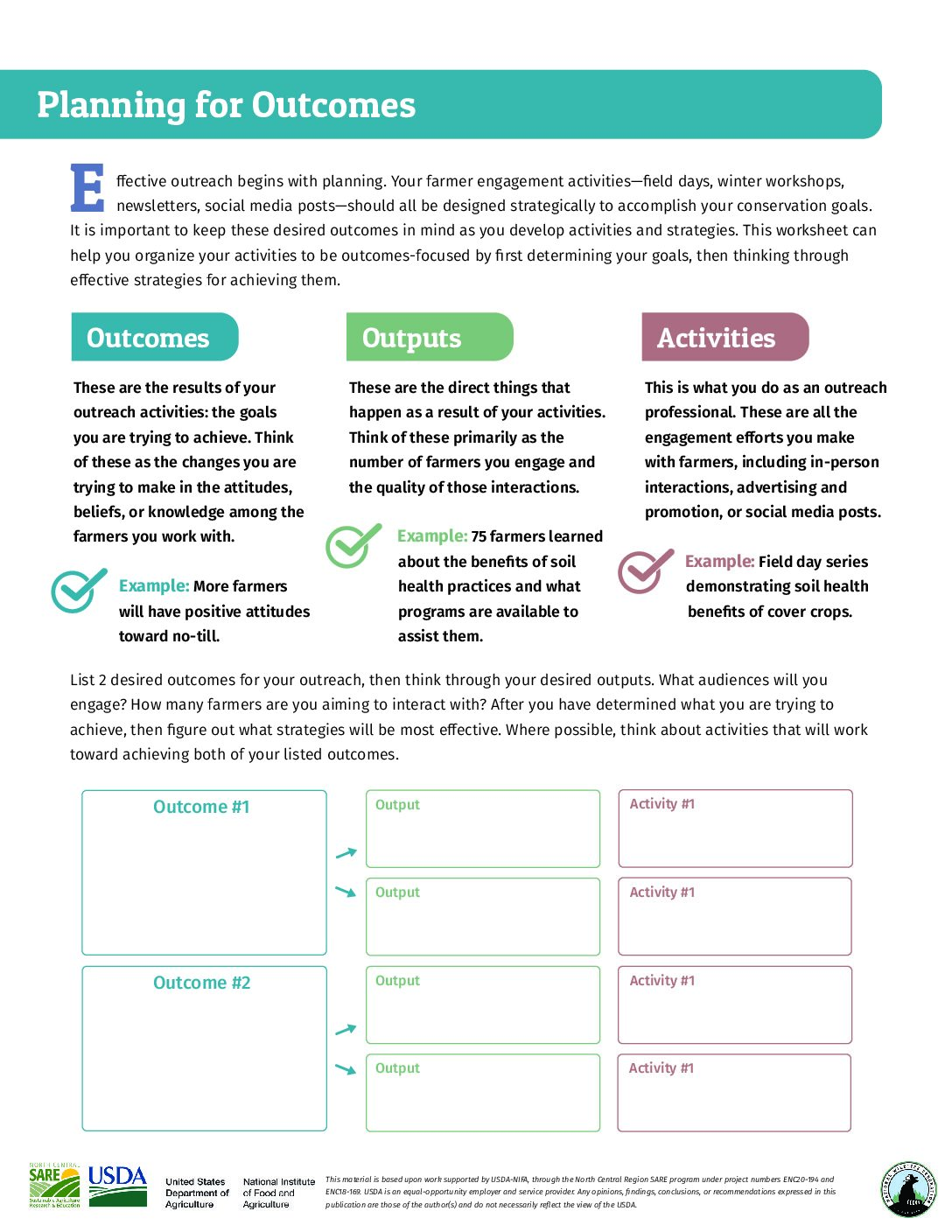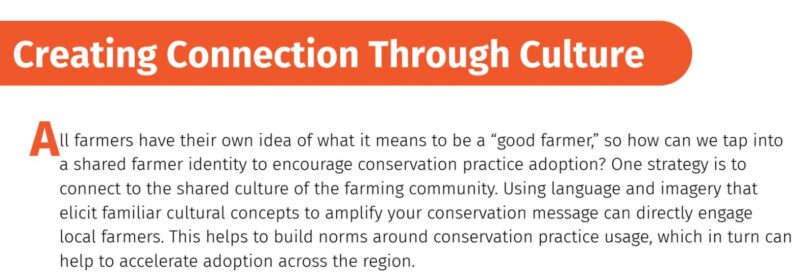Effective outreach begins with planning. Your farmer engagement activities—field days, winter workshops, newsletters, social media posts—should all be designed strategically to accomplish your conservation goals. It is important to keep these desired outcomes in mind as you develop activities and strategies. This worksheet can help you organize your activities to be outcomes-focused by first determining your goals, then thinking through effective strategies for achieving them.
These are the results of your outreach activities: the goals you are trying to achieve. Think of these as the changes you are trying to make in the attitudes, beliefs, or knowledge among the farmers you work with.
Example: More farmers will have positive attitudes toward no-till.
These are the direct things that happen as a result of your activities. Think of these primarily as the number of farmers you engage and the quality of those interactions.
Example: 75 farmers learned about the benefits of soil health practices and what programs are available to assist them.
This is what you do as an outreach professional. These are all the engagement efforts you make with farmers, including in-person interactions, advertising and promotion, or social media posts.
Example: Field day series demonstrating soil health benefits of cover crops.
Planning for Outcomes
The worksheet below can help you with the process of planning for outcomes. Start by listing 2 desired outcomes for your outreach, then think through your desired outputs. What audiences will you engage? How many farmers are you aiming to interact with? After you have determined what you are trying to achieve, then figure out what strategies will be most effective. Where possible, think about activities that will work toward achieving both of your listed outcomes.
 Download: Planning for outcomes worksheet
Download: Planning for outcomes worksheet
